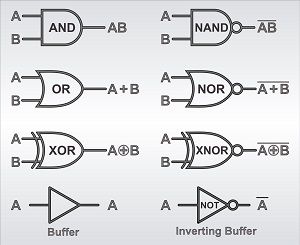21 Jan Gating in Human Reasoning
Both neuroscience and computer science have borrowed the metaphor of the gate for representing the function of letting some things go through and restricting others. In computing it is mostly a binary function: if the gate is closed, nothing comes in, if the gate is open, everything that is at the threshold comes in. I chose the pictures above because gates can be more complex than a simple binary open or closed. In the top image of a torii gate at a Shinto Shrine near my former student’s home in Tokyo, anything small enough to enter may enter at any time. There are some gates in computers and in the brain that probably behave like this. The lower gate, at the Nijo castle in Kyoto is less inclined to open and let things through. Brain cells, components within neurons, the connections between neurons and the distances between specialized areas of the brain may perform gating functions in the brain.
I think the most useful understanding of gating in cognition is one that acknowledges a variety of types of gates that perform a variety of functions, all of which limit transit, but to varying degrees and in different ways. Some of these might be binary: either open or closed. Others may support multi-valued logic that includes variations that are neither open nor closed.
| Understanding Context Cross-Reference |
|---|
| Click on these Links to other posts and glossary/bibliography references |
|
|
|
| Prior Post | Next Post |
| Theories on Microtubules Function in Thought | Your Place in the Noosphere |
| Definitions | References |
| gating function | Bill Newsome talk |
| perception noise | brain economy |
| multi-valued logic | Calvin 1996 |
Noise
Our environment is filled with noise that obscures and colors context. Human reasoning and decision-making involves cutting through noise to establish context. Presented with options, a person is capable of taking different decisions depending on the contextual frame presented. This flexibility in reasoning and decision-making depends on our ability to selectively focus on external perceptions and exclude internal distractions (gating). By focusing and gating, we can concentrate on integrating appropriate contextual and conceptual information to achieve rational conclusions. Gating is part of our brain economy. The symbols shown in the image at right represent the different logical gate operations in computer hardware (also implementable in firmware or software).
The idea of a logic gate has been discussed in other posts, and the concept of neurons in the brain behaving as logic gates was proposed as early as the 1940s by McCulloch and Pitts. For noise filtering, the logic implemented would be NOT function (as opposed to AND, OR or XOR). The torii gate in the picture above is more like a logical AND and the castle gate, a logical NOT.
Selective Filtering
 The brain and the five senses are always gathering and correlating information from the environment. This is necessary for survival. The consequence is that both relevant and irrelevant sensory signals are always bouncing around the brain, carrying with them the possibility of drawing attention. I believe that the resonating process that occurs in the brain for interpreting input is mechanically or electrically identical to the processes that filter out noise and that focus on that which is important, interesting or alarming. The only difference, I think, is the specific parts of the brain that are most involved in the process. I will be working on either supporting or refuting this assertion over the next few years, including creating computational models that implement it.
The brain and the five senses are always gathering and correlating information from the environment. This is necessary for survival. The consequence is that both relevant and irrelevant sensory signals are always bouncing around the brain, carrying with them the possibility of drawing attention. I believe that the resonating process that occurs in the brain for interpreting input is mechanically or electrically identical to the processes that filter out noise and that focus on that which is important, interesting or alarming. The only difference, I think, is the specific parts of the brain that are most involved in the process. I will be working on either supporting or refuting this assertion over the next few years, including creating computational models that implement it.
This is a brief post, intended to foreshadow some analysis I intend to follow. In the mean time, please check out this Bill Newsome talk. It may open some thought-provoking gates in your mind.
| Click below to look in each Understanding Context section |
|---|










